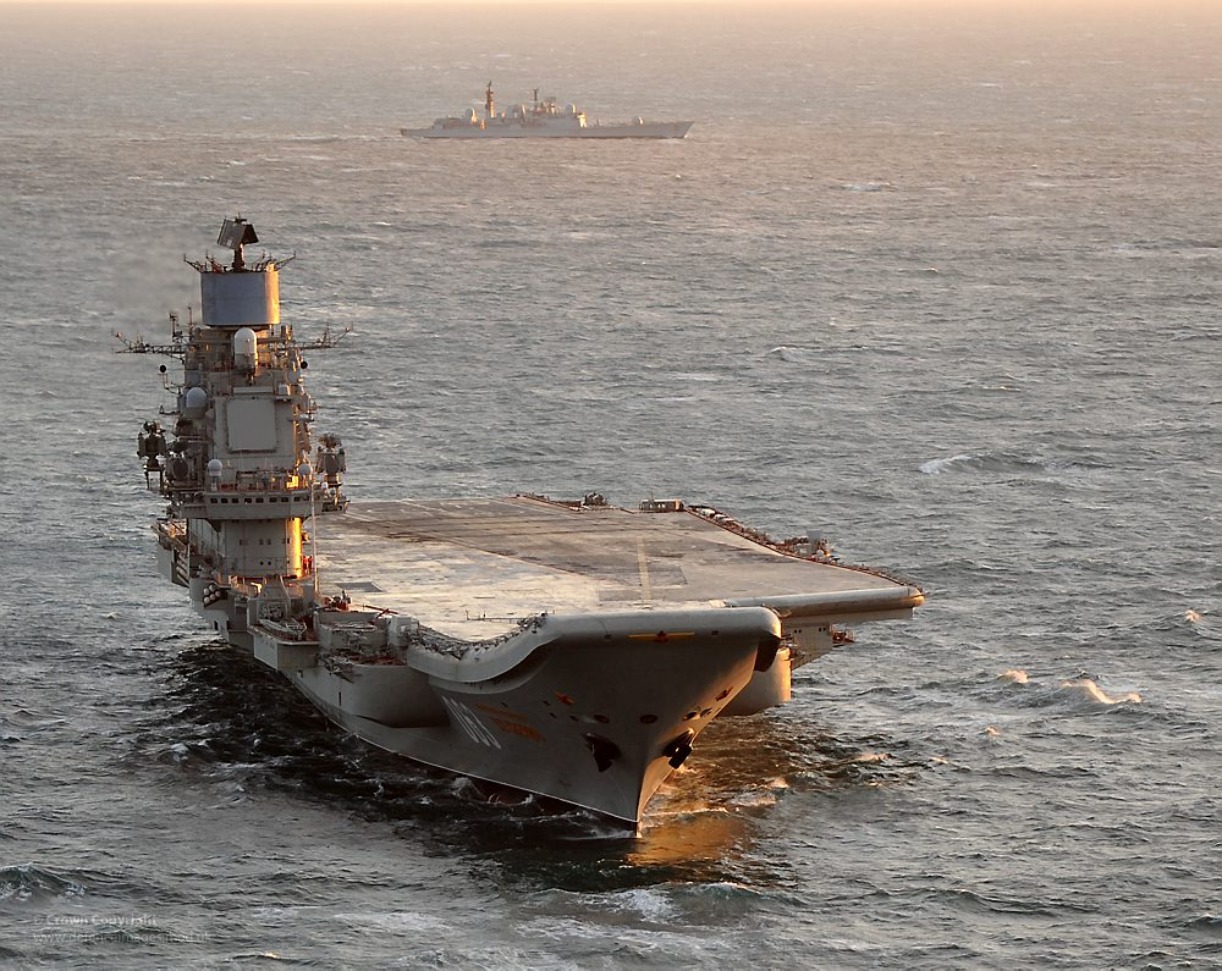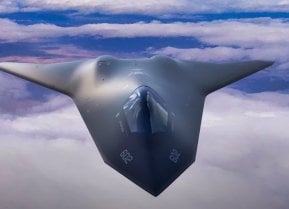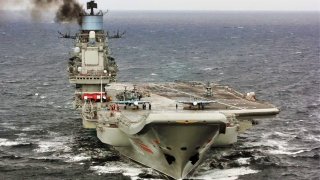Admiral Kuznetsov: Russia's Only Aircraft Carrier Is Totally Beyond Fixing
Russia’s sole aircraft carrier, Admiral Kuznetsov, has become notorious for its litany of problems, from fires and falling cranes to shoddy construction and emissions of thick black smoke. These issues have kept the carrier out of action during Russia's invasion of Ukraine.
The Problem: Russia’s sole aircraft carrier, Admiral Kuznetsov, has become notorious for its litany of problems, from fires and falling cranes to shoddy construction and emissions of thick black smoke. These issues have kept the carrier out of action during Russia's invasion of Ukraine.
-Originally commissioned in the 1980s, Kuznetsov was designed to protect Soviet naval assets but has been plagued by design flaws and operational mishaps throughout its service history.
The Aircraft Carrier That Nees to Sail Into the History Books for Good: With ongoing maintenance issues and economic sanctions hampering military projects, Russia's plans to develop new amphibious assault ships as potential light carriers face significant delays, leaving Kuznetsov as an unreliable asset in Moscow's naval fleet.
Admiral Kuznetsov: The Embattled Carrier That Couldn’t Set Sail in Russia’s War
Russia’s sole aircraft carrier, Admiral Kuznetsov, has become notorious for its litany of problems, from fires and falling cranes to shoddy construction and emissions of thick black smoke.
These issues have kept the carrier out of action during Russia's invasion of Ukraine. Originally commissioned in the 1980s, Kuznetsov was designed to protect Soviet naval assets but has been plagued by design flaws and operational mishaps throughout its service history.
With ongoing maintenance issues and economic sanctions hampering military projects, Russia's plans to develop new amphibious assault ships as potential light carriers face significant delays, leaving Kuznetsov as an unreliable asset in Moscow's naval fleet.
Russia’s sole aircraft carrier is widely considered to be a massive failure.
Admiral Kuznetsov has been plagued by a series of unfortunate incidents throughout its service history that have largely left what Russia calls a heavy cruiser immobile.
From fires and falling cranes to shoddy construction and black fumes, the Kuznetsov is notoriously troubled. The warship has notably not participated in Russia’s ongoing invasion of Ukraine in any capacity since the conflict began in February 2022.
While the carrier is sidelined due to constant maintenance issues, the Kremlin is working to develop two Ivan Rogov-class amphibious assault ships which could potentially function as light aircraft carriers for the Russian Air Force.
However, production and manufacturing issues caused in part by the heavy economic sanctions imposed on the country at the moment indicate that this project will not come to fruition anytime soon. In the meantime, Moscow is forced to rely on its essential defunct Kuznetsov carrier.
The history of the Admiral Kuznetsov
Russia’s oldest and only aircraft carrier was named to honor the revered Soviet Admiral Nikolay Gerasimovich Kuznetsov during the Cold War. Initially, the ship was laid down as “Riga,” followed by a name change to “Leonid Brezhnev” and later “Tbilisi.”
The ship was finally renamed Admiral Flota Sovetskogo Soyuza N.G. Kuznetsov before setting sail. First commissioned in the mid-1980s, the carrier was designed to protect the USSR’s missile-lugging submarines and other warships. Following the collapse of the Soviet Union, Kuznetsov sailed from the Black Sea to join the Northern Fleet.
The Russian Navy describes the warship as a “heavy aircraft-carrying cruiser,” as it is capable of carrying a dozen Sukhoi Su-27s (designated by NATO as Flanker), 16 Yakovlev Yak 41-M (Freestyle) fixed-wing airframes, in addition to an array of helicopter platforms.
Notably, Kuznetsov is equipped with a Granit anti-ship missile system as an armament, which is fitted on the carrier with 12 surface-to-surface missile launchers. Additionally, Kuznetsov can carry nearly 200 3K95 Kinzhal surface-to-air missiles.
Design flaws
Unlike Western warships which are normally powered by nuclear power or gas turbines, Kuznetsov is conventionally powered by a unique fuel source- mazut. This thick and tarry substance allows enemy ships to detect the aircraft carrier from miles away due to the fumes of black smoke that persistently engulf the ship.
In the past, Russian naval officials have noted that the failure to preheat the fuel source prior to entering the combustion chamber may play a part in the heavy smoke trail associated with the cruiser.
Incidents and mishaps:
Kuznetsov’s weak fuel source and shoddy construction are not the only inhibitors of the carrier’s success. When the ship first deployed in 2016 to Syria, two airframes were lost due to faulty arresting wiring on deck.
Since the carrier was forced to relocate to shore following this incident, it was rendered a useless asset during the deployment. Two years later, a fire ignited by a welding incident in the ship’s engine room resulted in the death of two workers and sent 14 others to the hospital.
The same year, a floating crane crashed into Kuznetsov’s deck in an incident that killed one worker and injured four others.
In 2022, a fire reportedly broke out onboard the carrier, sparking an evacuation of roughly 20 people. According to Russian state-run media outlets, the heavy cruiser was undergoing repairs in the northwestern region of Murmansk when the incident occurred. Even a crime of embezzlement relating to the shipyard came to light over the last few years.

It seems like Kuznetsov cannot catch a break, and the hefty cruise is certainly not aiding Russia’s naval fleet amidst the ongoing war with Ukraine. Recently, Russian state-run news outlet TASS claimed that, “According to the adjusted plan, factory sea trials of the aircraft carrier should begin in the spring of 2024,” adding that “If the tests pass without glitches, then the ship can be handed over to the fleet at the end of 2024. If something goes wrong during the tests, then a shift to 2025 is inevitable.”
However, Moscow’s worsening economic woes and inability to sustain its troops with up-to-date and well-maintained military equipment on the frontlines in Ukraine suggest that timeline is wishful thinking at best. Clearly, this aircraft did not head out to sea months ago and won't anytime soon.
About the Author: Maya Carlin
Maya Carlin, National Security Writer with The National Interest, is an analyst with the Center for Security Policy and a former Anna Sobol Levy Fellow at IDC Herzliya in Israel. She has by-lines in many publications, including The National Interest, Jerusalem Post, and Times of Israel. You can follow her on Twitter: @MayaCarlin.
All images are Creative Commons and or Shutterstock.


